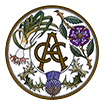Temporary Event Notices (TENs) are a method of obtaining, under the Act, the authority to sell alcohol and provide regulated entertainment at an event of short duration (e.g. a dance, or a private party) where the organiser wishes to avoid going through the more complicated procedure of applying for a Premises Licence.
The method of obtaining a TEN must be submitted by the premises user (must be over 18 years of age) and must be copied to the relevant Chief Officer of Police at least ten working days before the event. The TEN (in a prescribed form) must contain the following information–
- The licensable activities to be carried out
- The total length of the event (not to exceed one hundred and sixty eight hours)
- The times during which the licensable activities are to be carried out
- The maximum number of people to be allowed onto the premises at any one time (not to exceed 500)
- Whether any alcohol sales are to be made for consumption on or off the premises (or both)
The Act requires that alcohol sales must be made under the authority of the premises user. Further requirements are that there must be an interval of at least twenty-four hours between events and no premises may be used for more than twenty one days per year in total. Any club wishing to exceed the limit of fifteen events a year at the same premises would have to apply for a premises licence.
Licensing Authority Officials are required to acknowledge receipt of the TEN, and provided they do not issue a counter notice and the Police do not object (they can only do so, or insist on conditions in keeping with the crime and disorder objectives of the Act), the event can go ahead.
If the Police object, Licensing Authorities are required to hold a hearing at which the Police and premises user may put their case. The exceptional use of ‘Police Powers’ does not arise in the case of small-scale events.
The TEN procedure can also be applied to increase a club’s normal Permitted Hours granted under the CPC, for the event in question. Applications for such events must be made by an individual rather than the club. The number of applications made in any one year, by any one individual, is five. Therefore, club officers can divide the applications in order to take full advantage of these events, e.g. the Secretary makes the first five applications, the Treasurer the next five and the Chairman the remaining two.
Summery:
Temporary Event Notice Process
The premises user must send the TEN to the relevant licensing authority and copy it to:
- The police, and
- The environmental health authority.
Types of TEN
There are two types of TEN: a standard TEN and a late TEN.
Standard TEN
A standard notice must be given no later than ten clear working days before the event to which it relates.
The police and environmental health have three working days from the date of receipt to object to the notice on any of the licensing objectives.
If there is an objection, a hearing must be held unless all parties agree it is not necessary.
There is a right of appeal following a hearing.
Late TEN
A late notice must be given not before nine and not later than five clear working days the event.
The police and environmental health have three working days from the date of receipt to object to the notice on any of the licensing objectives.
If there is an objection, the event cannot take place.
There is no right to a hearing or appeal.
Limitations
Both types of notice are subject to the following restrictions:
- Maximum occupancy 499 persons at any one time (including staff and any performers)
- Maximum 15 events per calendar year for the same premises
- Maximum total period 21 days per calendar year for the same premises
- Maximum 168 hours for each event
- Minimum of 24 hours between events at the same premises only if the notice is given by the same user or their associate (as defined).
